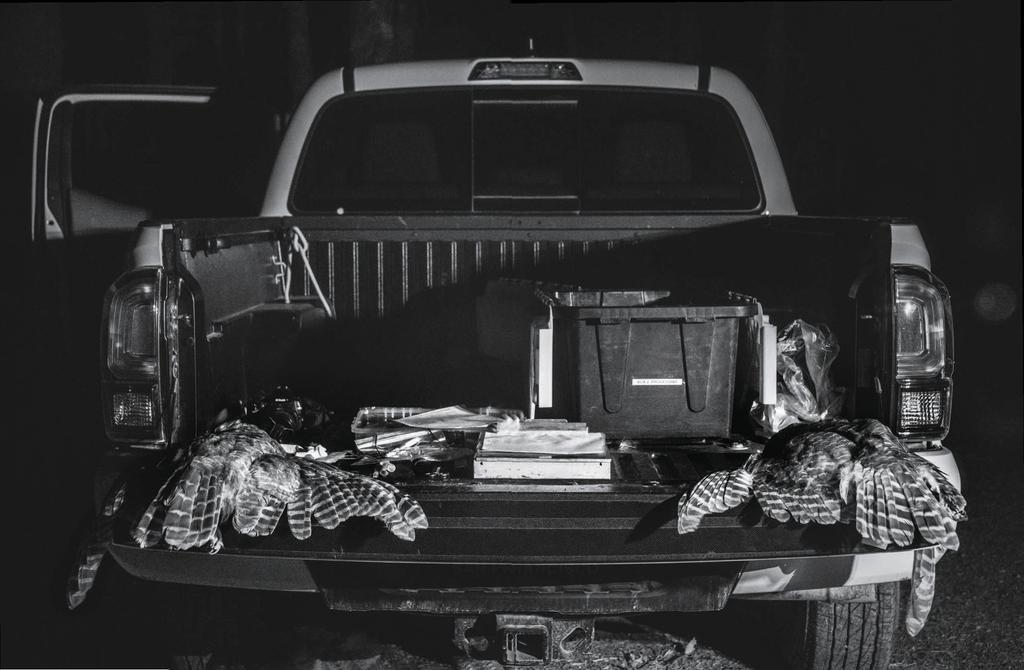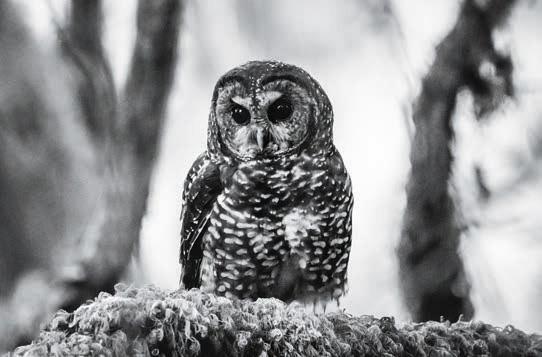
Night hangs over the Hoopa Valley Reservation.
Stars spill toward the evergreen horizon as Mark Higley, a wildlife biologist for the Hoopa Valley Tribe, places a speaker on an unpaved road. Soon a recorded bird call—Who cooks for you? Who cooks for you all?—tumbles down the Northern California valley. A few minutes later, the faintest of replies. These hoots slowly build as the Barred Owl draws closer, bracing for a turf war, until the calls are almost on top of one another, on top of Higley, filling the entire night.
Then a handsome young male materializes in a copse of hardwoods, calling expectantly. Higley points a 12-gauge shotgun at the dark-eyed bird, eponymous horizontal bars resplendent on his upper breast, and the crack that follows shatters the air. Wings splayed, the Barred Owl lingers a moment before gravity prevails.

The digital owl continues to call from the speaker, and before long another voice resonates through the woods: a female. The second owl swoops up the valley like an echo, and Higley reprises this sober scene. Call, aim, blast, fall. Tufts of down float across the road like moths.
After placing the dead male in the truck bed, Higley smooths the bird’s neck feathers—a movement at once quick and gentle. He does not enjoy killing owls. But he tries to extract as much purpose from it as possible: swabbing their microbes, drawing their blood, collecting their stomach contents, anything that might be of use to science. He has been sending the bodies to museums and universities, but the birds are saturating collections like they are saturating Northwest forests. “Now my freezers are packed full of birds I can’t get rid of,” he says. “Eventually I’ll have to start burying them.”
Higley performs this heavy task night after night as part of a broader effort to save another raptor, the Northern Spotted Owl. A polarizing icon of the Pacific Northwest, the Spotted Owl captured the national spotlight during the so-called Timber Wars of the 1980s and ’90s that pitted loggers against newly minted environmental activists. The bird’s 1990 listing as threatened under the Endangered Species Act (ESA) reverberated through the region and reshaped forest management. Yet scientists say it is now spiraling dangerously




